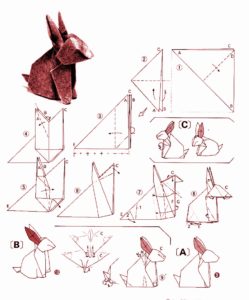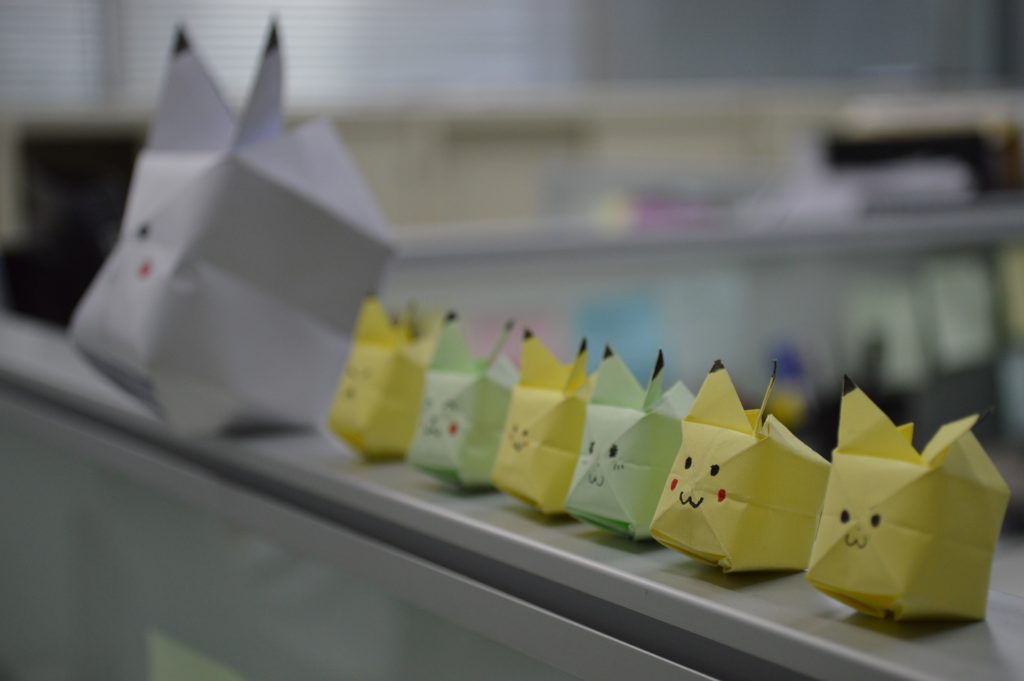So you’re interested in starting a journey into the Japanese art of paper folding? Well, you’ve landed on the right page for your endeavors in the craft of origami. This beginners guide to Origami is just for you!
This is probably one of the most popular hobbies you rarely hear about. It’s practitioners tend to not be overly showy, and origami is often a solitary hobby. It has been featured prominently in some major films, such as 1982’s Blade Runner, and some particular designs are often popular with kids in elementary school, such as the paper fortune teller or “finger game” that predicted our futures all the way back in 5th grade.
Where Did Origami Come From?
A precursor to origami likely originated in China, soon after the advent of paper itself. In parts of Ancient China, folding paper into shapes and burning them became a ritual for funerals. However, origami as we know it today was popularized by the Japanese after monks brought the paper-folding craft over from China. In Japan is where its artistic potential developed and the art (and hobby) of origami was born!

In the early years, since the paper was so difficult to produce, origami, first known as “orkata” or folded shapes, was strictly for the noble classes and only for special ceremonies. But as time went on and paper became mass-produced and cheaply available, the general public also had access to the craft. From there, it has become its own distinguished and respected art form through the centuries to what we know today as “origami.” The word comes from ori, the Japanese word for “folding” and kami, the Japanese word for “paper”.
The grand master, Akira Yoshizawa, is credited with bringing the craft into the modern era. His diagram system, created in the 1930s, furthered the accessibility of the art of origami as patterns could now be created and published and reproduced relatively easily. Though nowadays, with the advent of the internet, you can look up a model on-line. Most likely, it will be a series of physical pictures of the process with an explanation of what direction the paper should fold.
Benefits of Origami
But origami isn’t just a fun hobby. It is also good for the mind. It stimulates both the left and right hemispheres as you are both using your creativity and your tactile senses to construct your paper creation. It strengthens fine motor skills and creates a sense of achievement. It also is a quiet and meditative activity that promotes mindfulness. Origami also encourages focused attention meditation. Those who engaged in this kind of meditation were shown to have an increased sense of calmness. Origami may be a good way for you to take a step back mentally. Whether it’s a hectic schedule or general stress, origami is a great way to ground yourself.
You also are left with beautiful works of art, provided you have some skill at folding. Completed origami figures make for great decorations for your home or office, and serve as excellent conversation starters too.
Unlike many hobbies, origami isn’t doesn’t require a lot of specialized (and expensive) equipment. You can certainly invest in nicer paper, but even a basic sheet pulled out of a printer is enough to get started, and origami experts might challenge themselves (and show off for friends) by making art out of a variety of unorthodox paper items, such as a gum wrapper or a restaurant receipt.

Your First Origami
The actual process of getting started with origami is straightforward. A piece of paper, scissors, and a quick online search for a pattern, and you are up and running!
More advanced projects will require things like glue and assembly of pieces. However, when getting started, it is as simple as acquiring a sheet of printer paper and probably a pair of scissors to cut it down to size. You can always purchase sized origami sheets, but it isn’t essential, especially when you just getting started. There are also books full of great patterns to follow, but a lot are available online for free if you take the time to look.
Now in origami, there are lots of different types of folds. I’m sure you’ve seen plenty of really cool creations and wondered how they did it. But going into detail about folding is usually overwhelming for most beginners. The most basic folds are what you want to stay focused on and then add other techniques. Learning and mastering one fold at a time will make your ability to progress to more challenging patterns easier. As a beginner, there are just two basic folds that will make up the majority of your projects. They are the “mountain” and “valley” folds. The mountain fold bends the paper to a peak, and the valley fold is the inverse of that. All other folds are a version or a combination of these two.
That is about all you need to know to get yourself started. A quick search on the web, a free afternoon, and a piece of paper will be all it takes to start your origami journey. Have fun creating!
But What Do You Do with Origami?
Once you’re done with your creation, what do you do with it? Are you going to hoard a bunch of decent to near-perfect paper swans? Well, probably not. One of the great things about origami is that it’s infinitely repeatable. You can even reuse the same piece of paper over and over several times before it wears out.
Still, you may want to save some of your favorites, but it’s good to know that you can always make a new figure when you want. This temporary nature of origami can be a selling point too since you can practice “letting go” by unfolding, throwing away or even burning your handiwork. While it might not sound like it, it can be quite cathartic!
Keeping a modest collection is perfectly acceptable, though. Depending on your home and its furnishings, you may find origami to be a great choice for home decor. The smaller figures make for great additions to curio cabinets and the like, plus the many potential designs mean you can always swap in something more suited to the season.

If you want to get really fancy, you can make DIY display cases for your origami. Some designs may look great flattened into a typical picture frame, but most origami needs to maintain its 3-dimensionality. So, you can find a simple display case suitable in size and use an appropriate method for mounting the piece inside. You might use a bit of glue, maybe some wires or thread.
However you decide to display your finished products is up to you. There are no hard and fast rules, and origami is ultimately a very personal hobby that is whatever you make it. So go find a piece of paper and make something.

